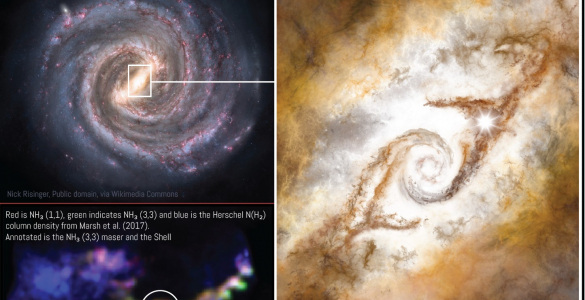Latest NRAO News
News is managed by NRAO News & Public Information. Questions about News? Have a story to share? Want to interview a scientist or create new media about our telescopes?

An international team, led by astronomers from the Indian Institute of Space Science and Technology (IIST) and the Indian Institute of Science (IISc), has for the first time detected circular polarization in radio emission originating from a massive protostar, IRAS 18162-2048—unveiling fresh clues about the cosmic forces shaping our universe.

Astronomers have made a groundbreaking discovery using some of the world’s most advanced radio telescopes. Researchers, led by Fengqiu Adam Dong, a Jansky Fellow at the NSF Green Bank Observatory (NSF GBO), have identified an exceptionally unusual cosmic object known as a Long Period Radio Transient (LPT), named CHIME J1634+44. This object stands out as one of the most polarized LPTs ever discovered, and it is the only one observed to be spinning up (meaning its rotation is speeding up) a phenomenon never seen before in this class of astronomical objects.

An international team of astronomers has discovered a massive cloud of gas and dust located in a little-known region…

The U.S. National Science Foundation National Radio Astronomy Observatory (NSF NRAO) is proud to announce a significant milestone in advancing STEAM education in rural New Mexico. This achievement is the result of dedicated advocacy by Socorro County and Associated Universities, Inc., whose efforts—combined with bipartisan support from state legislators and Governor Michelle Lujan Grisham—have secured $1.78 million in capital outlay funding for the Next Generation Learning Center at the U.S. National Science Foundation Very Large Array in Socorro County.

A team of astronomers has made a surprising discovery using the U.S. National Science Foundation Green Bank Telescope (NSF…

Astronomers are getting a much clearer picture of what galaxies looked like in the early Universe, thanks to a…





